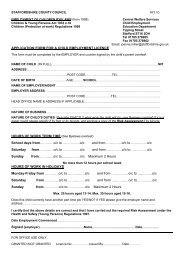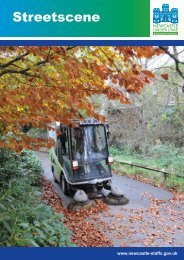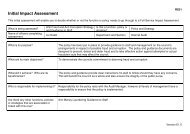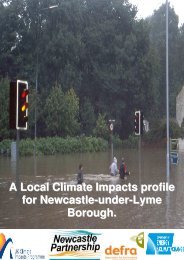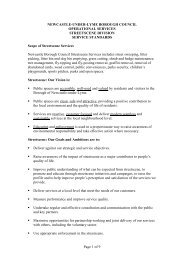Natural England Technical Information Note TIN003 - Rabbits ...
Natural England Technical Information Note TIN003 - Rabbits ...
Natural England Technical Information Note TIN003 - Rabbits ...
Create successful ePaper yourself
Turn your PDF publications into a flip-book with our unique Google optimized e-Paper software.
<strong>Natural</strong> <strong>England</strong> <strong>Technical</strong> <strong>Information</strong> <strong>Note</strong> <strong>TIN003</strong><strong>Rabbits</strong> – management options for preventing damageSpring trappingUnder the Pests Act 1954, only approved springtraps, designed to catch and kill rabbitshumanely, may be used. Those currentlyapproved by the Spring Traps Approval Order1995 are the Imbra Trap Mark I and Mark II,Juby Trap, Fenn Rabbit Trap Mark I, FennVermin Trap Mark VI (Dual Purpose), SpringerNo. 6 (Multi Purpose), Victor Conibear 120-2,BMI Magnum 116, and clones of any of theselisted spring traps. Spring traps generally consistof a pair of clamps that are triggered to catchrabbits that step onto a plate mechanism. Thetraps should be set firmly in position with thetreadle plate flush with the floor. The plateshould be concealed by covering lightly with soil.To minimise the risk to non-target species, stockand pets should be excluded from the trappingarea and the traps must be set only within theoverhang of natural or artificial tunnels.The Protection of Animals Act 1911 requires thatall spring traps set for the purpose of catchingrabbits (or hares) should be inspected atreasonable intervals and at least once every daybetween sunrise and sunset.SnaringSnares are intended for use to tether animals forsubsequent humane despatch. They are madefrom stranded brass wires that run freely througha small eye made in one end of the wire. Thelooped end of the wire (100 mm (4 in) diameter),into which the animal places its head, ispositioned about 90 mm (3 in), above the groundusing a short, notched stick (the 'pricker' or'teeler'). The free end of the wire is securelytethered by a strong rot-proof cord to a peg,which is driven firmly into the ground. Thisprevents captured animals from escaping.Snares with a 'stop' or knot about 140 mm (5 in)from the eye can be used. The 'stop' preventsthe loop from closing fully, thus ensuring thesnare tethers rather than kills the rabbit. Snaresshould be set on well-used rabbit runs, in shortvegetation, close to the harbourage from whichrabbits are gaining access to crops. Whererabbits are numerous, the use of well-placedsnares can catch animals quickly and efficiently,but results are poor during dry weather and frost.The Wildlife and Countryside Act 1981 prohibitsthe use of self-locking snares and requires freerunningsnares to be inspected daily. Allreasonable precautions should be taken to avoidcatching non-target animals. Under the Wildlifeand Countryside Act 1981 it is illegal to set asnare to catch certain animals, such as badgersand otters. Under the Deer Act 1991 it is anoffence to use snares to kill or take deer. It isrecommended that they are inspected at dawnand dusk, and that they are not set wherelivestock are present or if there is a risk todomestic pets.FerretingThis involves the introduction of ferrets into theburrow system. The ferrets drive rabbits intonets, which are placed over the burrowentrances or to waiting guns that shoot them asthey bolt from tunnel entrances. Ferreting ismost successful outside of the breeding seasonand, having the advantage of capturing morefemales than males, may serve as a valuabletechnique for dealing with intransigentpopulations. However, the method is timeconsuming and, when used in isolation, isunlikely to produce effective control of rabbitinfestations.Damage reduction methodsTree-guardsIndividual tree guards and shelters can be usedto protect young trees and shrubs from rabbitbrowsing and bark stripping where it isimpractical or uneconomic to enclose them withfencing. There are many types availableincluding plastic net guards, split plastic tubes,spiral plastic sleeves and welded meshcylinders. Spiral plastic sleeves are perhaps theleast successful because they tend to bedisplaced by wind or animals. The effectivenessof split plastic sleeves and net guards is greaterbecause they are more robust. To effectivelyreduce rabbit damage tree guards should be atleast 60 cm (2 ft) high.RepellentsThe use of repellents can be expensive, anddoes not always provide long-term protectionfrom attack by rabbits. Any benefit they canprovide is often offset when, as is often the case,Page 7




